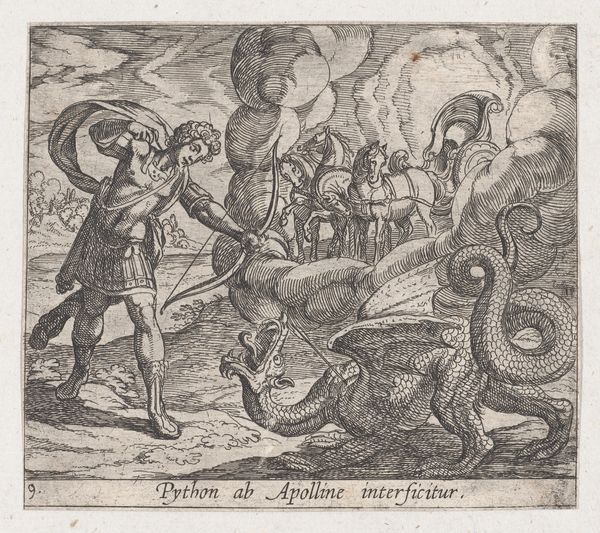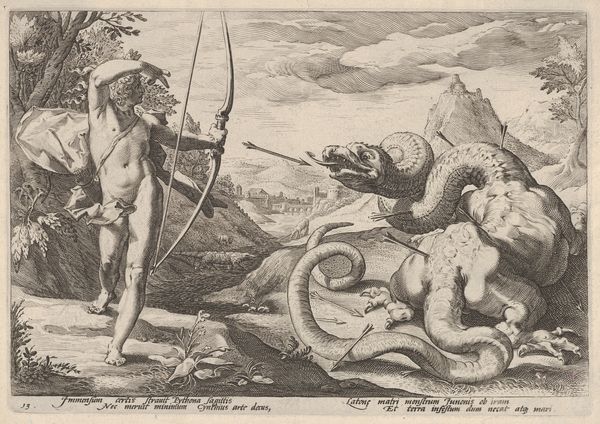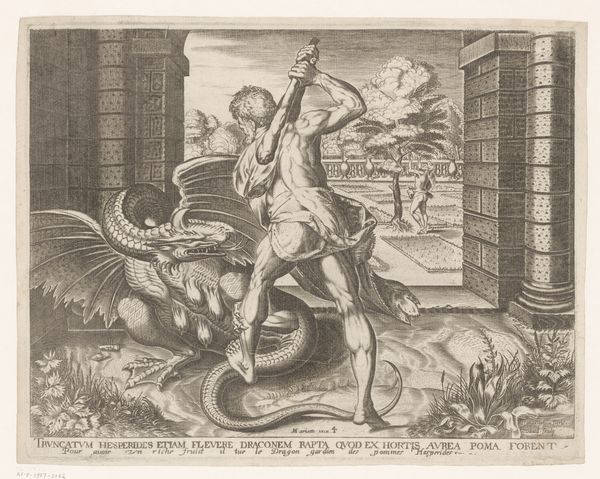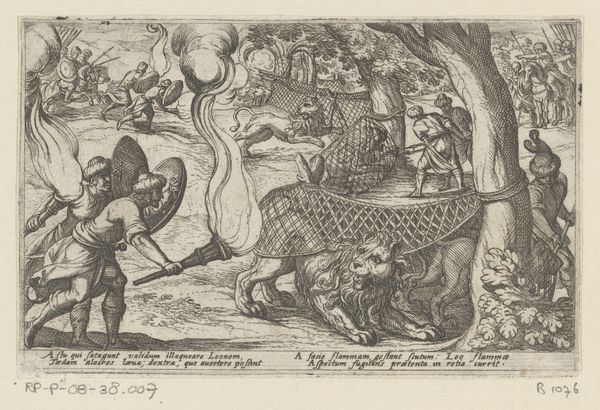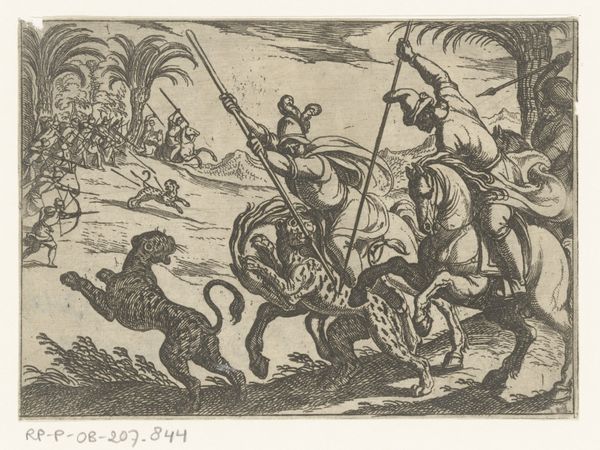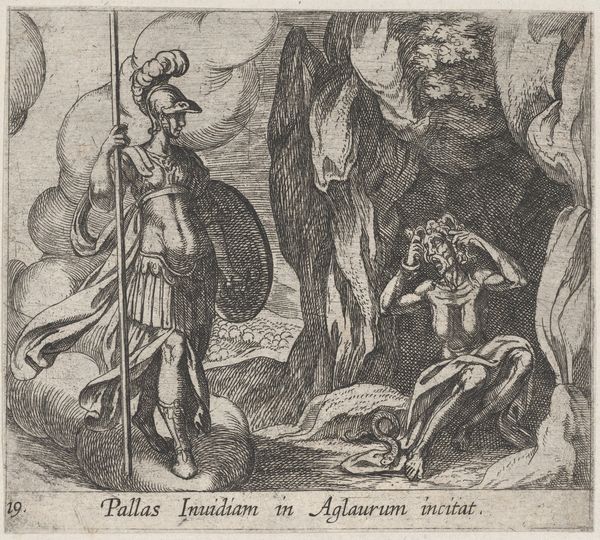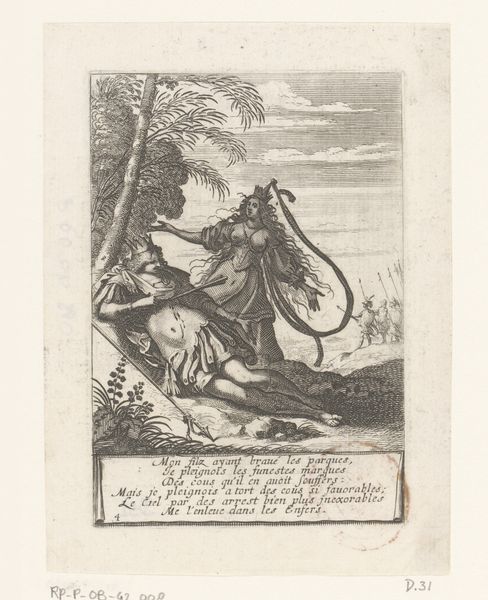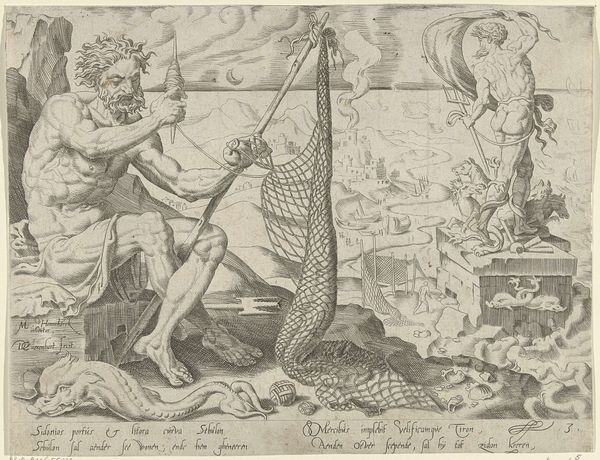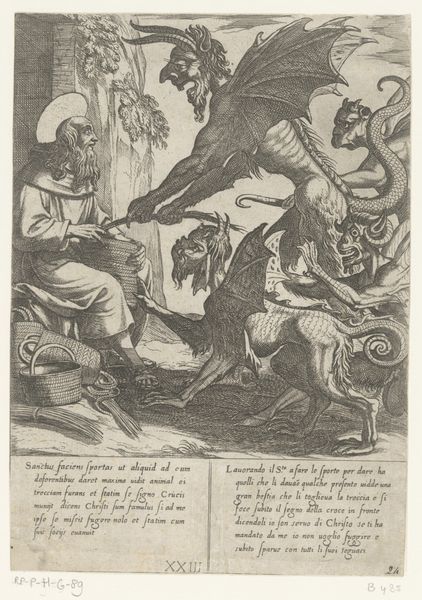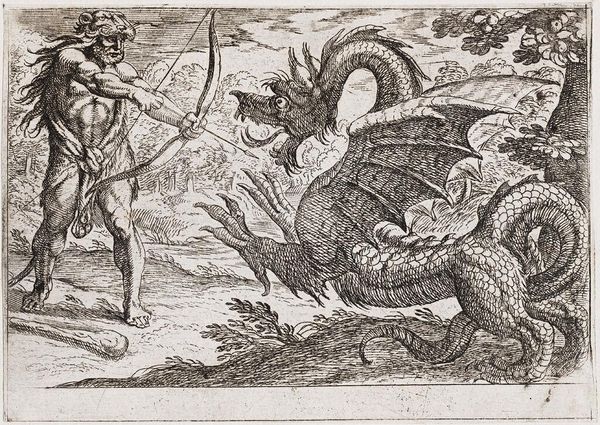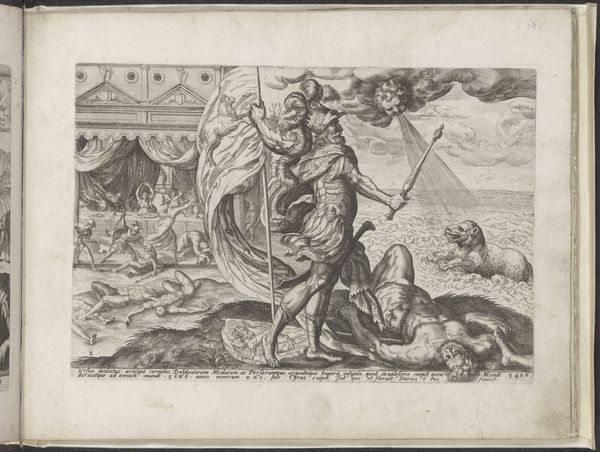
Plate 23: Cadmus Killing the Serpent (Draco a Cadmo interficitur), from Ovid's 'Metamorphoses' 1606
0:00
0:00
drawing, print, etching, engraving
#
drawing
#
narrative-art
#
baroque
# print
#
etching
#
figuration
#
history-painting
#
engraving
Dimensions: Sheet: 4 in. × 4 1/2 in. (10.2 × 11.5 cm)
Copyright: Public Domain
Editor: This is "Plate 23: Cadmus Killing the Serpent," a 1606 engraving by Antonio Tempesta, illustrating a scene from Ovid's *Metamorphoses*. The level of detail is really striking. How do you interpret this work? Curator: Well, beyond the surface narrative, it's essential to consider what this scene might have represented in the 17th century. Think about power structures: Cadmus, a foreign prince, establishes power by violently subjugating the local guardian serpent. Does the act of taming the "wild" through violence offer any parallels to colonial narratives or the suppression of indigenous cultures? Editor: That’s interesting, I hadn’t thought about a colonial context. So you see the serpent not just as a monster but as a symbol? Curator: Exactly! Consider also that the dragon/serpent figure is often coded as feminine or representative of the earth’s power. Cadmus's act then becomes not just about bravery but about male dominance and control over nature. The "civilizing" of a wild space. What does this say about gendered power dynamics of the time? Editor: So, this isn’t just a straightforward heroic tale. It also reflects some uncomfortable themes around power and domination, then. Is there also something to say about the depiction of Cadmus, with him almost looking indigenous? Curator: Precisely! That could imply an interesting ambivalence – is the artist romanticizing the conquest of nature? Who has the “right” to the land? Those kinds of questions can provoke deeper thinking about historical and cultural attitudes toward the "other." What are your thoughts? Editor: This has really given me a different perspective. It’s not just about a hero slaying a monster, it’s about the complex and often problematic relationships between power, gender, and the natural world. Thanks! Curator: Indeed. It challenges us to recognize that art, even when depicting ancient myths, is never truly neutral. There’s always a cultural agenda subtly at play.
Comments
No comments
Be the first to comment and join the conversation on the ultimate creative platform.
